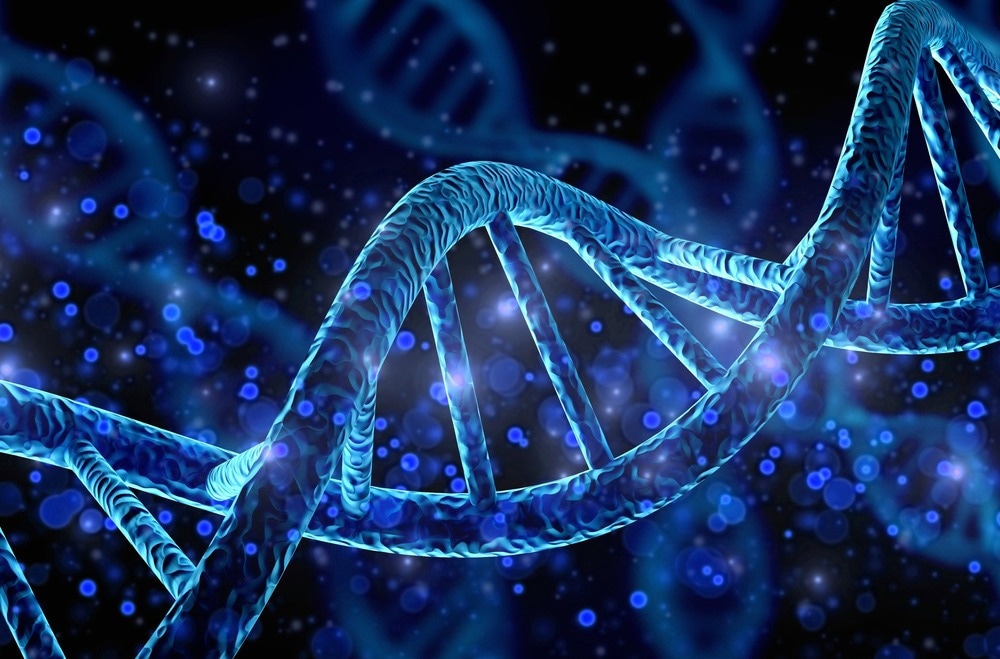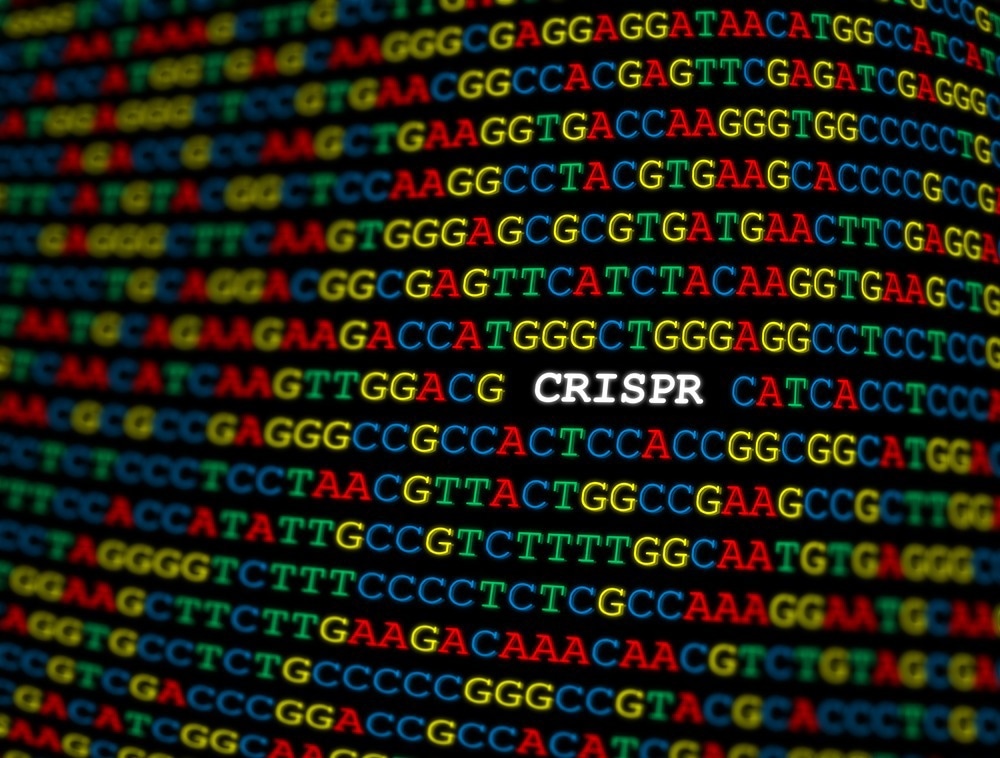The original CRISPR-Cas systems and related genome editing strategies raise some important limitations, mainly associated with the generation of DNA double-strand breaks (DBSs) at target genomic sites, the need to include a donor DNA molecule, and the activation of DNA repair pathways. Prime editing is a powerful genome editing toolbox that has come to solve such constraints. The prime editing technologies are still in their infancy but display promising results for making genetic modifications.

Image Credit: Billion Photos/Shutterstock.com
Prime Editing: a New Player in Genome Editing
Prime editing is a recently developed group of genome editing technologies capable of triggering high-precision gene editing events at target DNA sites. Possibly the most important advantage that prime editing holds is the elimination of the requirement of incorporating a DNA donor to carry out gene editing. Moreover, these technologies have the potential to trigger diverse genetic modifications, including Insertions, Deletions (InDels), and single-nucleotide conversions (i.e., Single Nucleotide Variants or SNVs).
Components of the Prime Editing Systems
Prime editing has three main molecular components that work together to perform efficient genome editing:
- A repurposed version of the Streptococcus pyogenes Cas9 endonuclease enzyme has been genetically modified to create a Cas9 nickase (nCas9) enzyme. This engineered nickase is able to cut only a single-strand DNA complementary to the template RNA rather than producing double-strand DNA breaks as with Cas9 used in conventional CRISPR-Cas9-based genome editing.
- An engineered reverse transcriptase (RT) enzyme capable of using an RNA template to synthesize a complementary DNA strand. The RT enzyme is fused to the C end of the nCas9 nickase to construct a chimeric fusion protein for versatile RNA-programmable gene editing.
- A prime editing guide RNA (pegRNA) sequence that serves as a guide RNA for base-complementary recognition of target DNA sites. This pegRNA has a primer binding sequence (PBS) and a 3′ extension sequence with the reverse-transcription template.
How does Prime Editing Technologies Work?
It is important to highlight the similarities between the conventional CRISPR/Cas9 and CRISPR prime editing systems regarding their functioning. Similarly to CRISPR/Cas9, prime editing systems require (1) a single guide RNA referred to as prime editing guide RNA, which identifies the target genomic site to be edited, and (2) an endonuclease enzyme to cut DNA and produce genetic modifications. Thus, the Cas9n/RT chimeric protein requires a pegRNA capable of guiding this complex to the target complementary DNA.
After target site recognition, the DNA target sequence (i.e., the nucleotide sequence has a Protospacer Adjacent Motif) is cut or 'nicked' by the Cas9n-RT complexed with the pegRNA. Subsequently, the pegRNA is attached to the PBS site, and then the reverse transcriptional activity of the RT domain is exploited to synthesize a DNA fragment from the RNA template.
Prime Editing vs. Base Editing
Base editing is another group of CRISPR-Cas9-based technologies used to introduce point mutations with high efficiency without causing double-strand breaks nor requiring DNA repair templates. The major classes of base editors include cytidine base editors (CBEs) and Adenine base editors (ABEs). Both types of genome editors trigger point mutations using a complementary template. Cytidine base editors allow Cytosine to Thymine (C to T) conversion mutations, while Adenine base editors convert Adenine: Thymine (A: T) into Guanine: Cytosine (G: C) base pairs.
Base editing offers higher editing efficiency than prime editing, but base editing is restricted to specific mutations. Prime editing has come to expand the repertory of CRISPR-based genome editing strategies repertory by triggering all types of mutations, including transitions (interchange of purines A ↔ G or pyrimidines C ↔ T), transversions (interchange of purine to a pyrimidine or vice-versa) and indels.
Interestingly, it has been shown that prime editing does not display off-target effects as expected by traditional CRISPR-Cas9. Nonetheless, it is also important to remark that prime editing still has some limitations associated with its low editing efficiency.

Image Credit: Catalin Rusnac/Shutterstock.com
Prime Editing: Perspectives and Horizons
Prime editing has emerged to overcome the constraints of conventional CRISPR-Cas genome editing systems by providing a flexible toolbox capable of correcting indels and all types of nucleotide conversions. High-precision genome editing based on prime editing is still in the maturation stage, which is not surprising when considering that this technology is only three years old.
Prime editing was originally described by Anzalone et al. (2019) in Nature, where authors described for the first time as prime editing systems may be used to achieve an efficient search and, subsequently, replacement of gene sequences without the need for triggering double-strand breaks or requiring a donor DNA template to perform desired genetic modification at target sites.
The development of better and more powerful variants of RT-nCas9 engineered proteins, as well as the design of more adaptable pegRNA guide sequences, will eventually overcome CRISPR-associated problems before wide application, both in basic and applied research.
Sources:
- Anzalone, Andrew V., et al. "Search-and-replace genome editing without double-strand breaks or donor DNA." Nature 576.7785 (2019): 149-157. DOI: https://doi.org/10.1038/s41586-019-1711-4
- Anzalone, Andrew V., Luke W. Koblan, and David R. Liu. "Genome editing with CRISPR–Cas nucleases, base editors, transposases and prime editors." Nature biotechnology 38.7 (2020): 824-844. DOI: https://doi.org/10.1038/s41587-020-0561-9
- Ille, Alexander M., Hannah Lamont, and Michael B. Mathews. "The Central Dogma revisited: Insights from protein synthesis, CRISPR, and beyond." Wiley Interdisciplinary Reviews: RNA (2022): e1718. DOI: https://doi.org/10.1002/wrna.1718
- Liu, Bin, et al. "A split prime editor with untethered reverse transcriptase and circular RNA template." Nature Biotechnology (2022): 1-6. DOI: https://doi.org/10.1038/s41587-022-01255-9
- Schene, I.F., Joore, I.P., Oka, R. et al. "Prime editing for functional repair in patient-derived disease models." Nature communications 11.1 (2020): 1-8. DOI: https://doi.org/10.1038/s41467-020-19136-7
- Sen, Debmitra, Sutripta Sarkar, and Poulami Mukhopadhyay. "Prime Editing: An Emerging Tool in Cancer Treatment." Molecular Biotechnology (2022): 1-12. DOI: https://doi.org/10.1007/s12033-022-00580-3
Further Reading
Last Updated: Jan 13, 2023